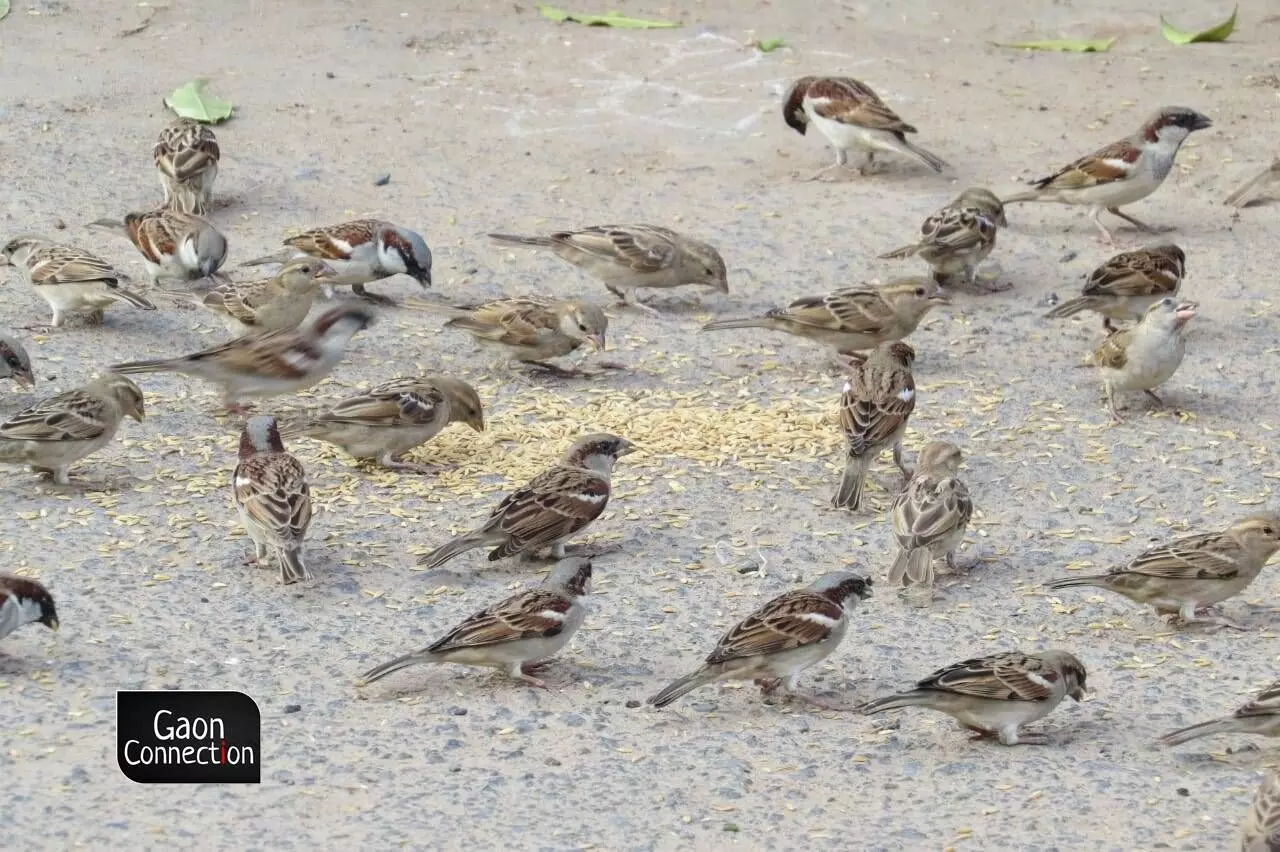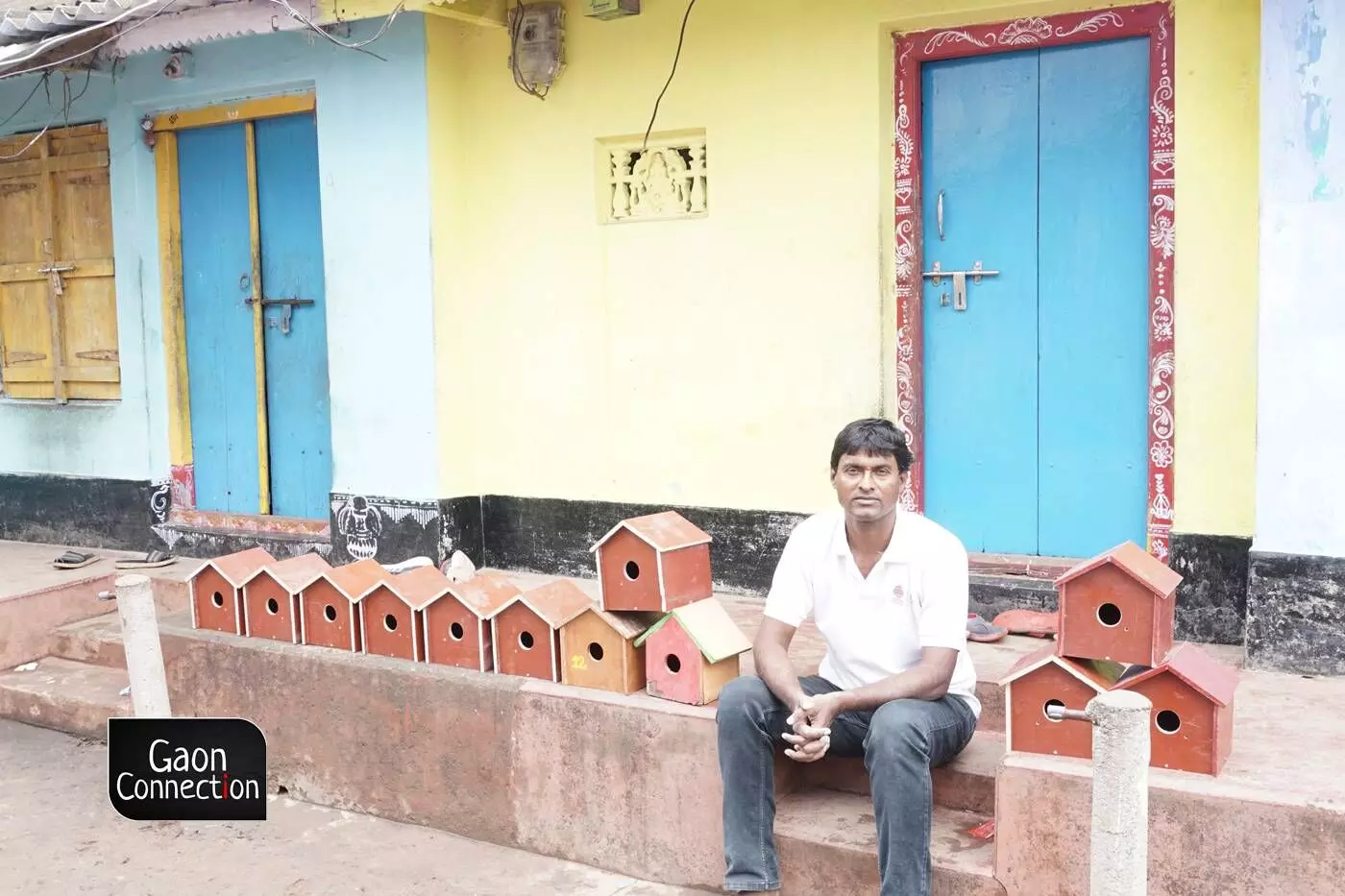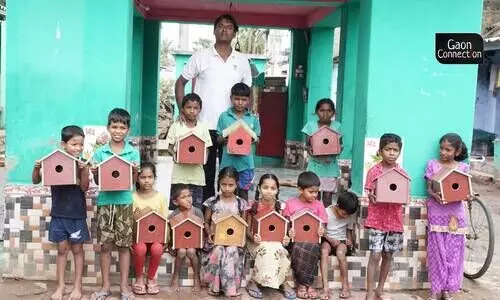Rabindranath Sahu, a resident of Puranabandha village in Odisha’s Ganjam district, is known for his conservation efforts which have contributed to the revival of the endangered Olive ridley sea turtles. Upon witnessing the falling numbers of sparrows in his village, Sahu began including the birds in his efforts to conserve ecology.
“In 2007, we started protecting house sparrows merely as a hobby by installing earthen pots and wooden boxes in our houses. Within a year we found that the number of house sparrows in our village had started to increase. A wooden box costs Rs 350 whereas an earthen pot costs only Rs 50,” Sahu told Gaon Connection.
“Only seven sparrows were found in our village in 2007 . Within a year, the number of sparrows at the village increased to around 52 including 32 female sparrows. Our village is now the home of around 500 sparrows,” he added.
Presently, Sahu’s efforts to conserve sparrows have spread to Odisha’s 17 districts with the local communities being guided to protect these birds.

House sparrow is a small, seed-eating bird, and its population is on a constant decline especially in urban areas.
“We spread the ground rice, paddy and other edibles which are a favourite amongst sparrows . These birds have lent happiness and colour in our otherwise hectic lives. Residents of nearby villages look up to us and we treat these birds as our assets,” Manoj Behera, a 32-year-old resident of the Purnabanda village, told Gaon Connection.
“Watching these birds make and mend nests in the boxes, lay and incubate eggs and feed fledglings is a sight to behold,” M. Sankar Rao, another village resident added.
Sahu informed Gaon Connection that house sparrow is a small, seed-eating bird, and its population is on a constant decline especially in urban areas.
“We organise training sessions among people in the villages about how to conserve the sparrows. Sparrows are facing threats from mobile phone towers. Mostly, the electromagnetic radiation pollution due to mobile phone towers is 200 per cent higher than the permissible limits. For the sparrows, it causes irritation and reduces their reproductive capacity,” he added.
The administration also hails Sahu’s efforts to conserve sparrows. “We need more people like Rabindra to save house sparrows,” Amlan Nayak, the Divisional Forest Officer of Brahmapur in Ganjam district, told Gaon Connection.
“Many environmentalists, turtle researchers and tourists who come to watch the arribada of the turtles take keen interest in our sparrow conservation work. Many also provide us with financial help to purchase boxes for sparrow conservation works,” Sahu, who is the secretary of Rushikulya Sea Turtle Protection Committee (RSTPC), said.
The sparrows play an important role as insect controllers as they eat a large number of insects. They depend exclusively on an insect diet to feed their young ones. World Sparrow Day, observed annually on March 20, is a day to raise awareness of the protection of sparrows.




















